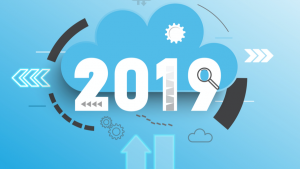- Justin Parker
- Reading Time: 3 minutes

2019 brought many changes to the SAP hosting market and hyperscalers have continued to deliver a level of disruption and transformational change. UpperEdge also had the pleasure of supporting many of our clients as they navigated the often complex and confusing SAP hosting market.
It is likely that years from now 2019 will be looked at as the year SAP hosting was forever changed and therefore, I’d like to take a moment to recap some of the more consequential transformations and observations:
SAP Embraces the Hyperscalers then Doubles Down with Microsoft
In ‘Q2, SAP announced “Project Embrace” to begin to support their customer’s desire to migrate their SAP workloads to hyperscalers, like AWS, Microsoft, and Google. Then in ‘Q4, SAP announced their selection of Microsoft Azure as their preferred cloud partner and Microsoft as a reseller of components of SAP’s Cloud platform. There’s no doubt this announcement forced AWS, and existing channel partners like IBM, to rethink their SAP strategies.
Following these announcements, we’ve seen SAP:
- Distance itself from their existing infrastructure services,
- Lead with Microsoft Azure in competitive RFP’s, and
- Inform their HEC customers that they’ll be migrated off legacy HEC infrastructure.
One thing is for sure, if you’re both a Microsoft and SAP customer, now is the time to revisit your agreements to see what benefits you can drive as both organizations seek to capture the economies of scale from this partnership.
Key Third-Party Support Providers Merge or Get Acquired to Further Expand into the World of SAP Hyperscale
In an earlier blog, I highlighted that traditional hosting providers were augmenting their suite of services to compete in the SAP hyperscale world and it appears that acquiring the capabilities was the method of choice in 2019:
- January 2019 — Syntax Acquires FIT
- June 2019 – Secure-24, an NTT Communications Company, Acquires Symmetry
Expect to see further consolidation in 2020 and beyond as hyperscalers continue to allow these service providers to focus more on delivering services vs. data center management. Organizations should continually question:
- When will the customer realize the benefits of these mergers? What will those benefits look like?
- How will traditional SAP hosting providers balance their existing infrastructure hosting investments with their hyperscaler service offerings? We’ve seen the same providers propose different solutions for similar customers.
The Lines Between Public and Private Cloud Got Even More Blurry When AWS Released Bare Metal Options for SAP
One of the critical decision points for many of our customers is deciding whether to go private cloud with dedicated infrastructure or move to the hyperscale public cloud. Generally, dedicated infrastructure delivered and managed by a third-party provides a level of comfort but now that bare metal servers for SAP in the hyperscale world is a reality, I anticipate this will change the decision process.
And Finally, Google Got Serious on SAP
Since the time hosting SAP workloads in the public cloud became a reality, AWS has led the way with Microsoft close behind, each driving the other to innovate and scale rapidly. However, 2018 saw Google begin to develop a real go-to-market strategy around SAP, led by former SAP HANA management team member Paul Day, along with the announcement that 12TB and 18TB HANA environments will be delivered in 2019 (which it did). By all measures, Google is now a serious contender in the SAP hosting arena.
Now, fast forward to today where Google leadership is a who’s who of former SAP executives: Rob Enslin, Dave Huchinson, and Briggette McInnis-Day, to name a few. While their overall market share of the SAP hosting space is small by comparison, with key customer acquisitions and former SAP leaders at the helm, I suspect their presence will grow rapidly.
With the number of consequential changes in the SAP hosting market in 2019, the market is poised for even more in 2020 and we look forward to supporting our clients through it all.
Comment below, read our other SAP blogs and follow UpperEdge on Twitter and LinkedIn. Learn more about our SAP Commercial Advisory Services.
Related Posts
Related Blogs
SAP Cloud ERP Packaging: Price Hikes Without Transparency
Deloitte’s Defense Unfolds: The Contract That Could Decide the Zimmer Biomet Case
Inside SAP’s Q3 2025: Strong Cloud Growth, AI Push, and Pricing Power Plays
About the Author
